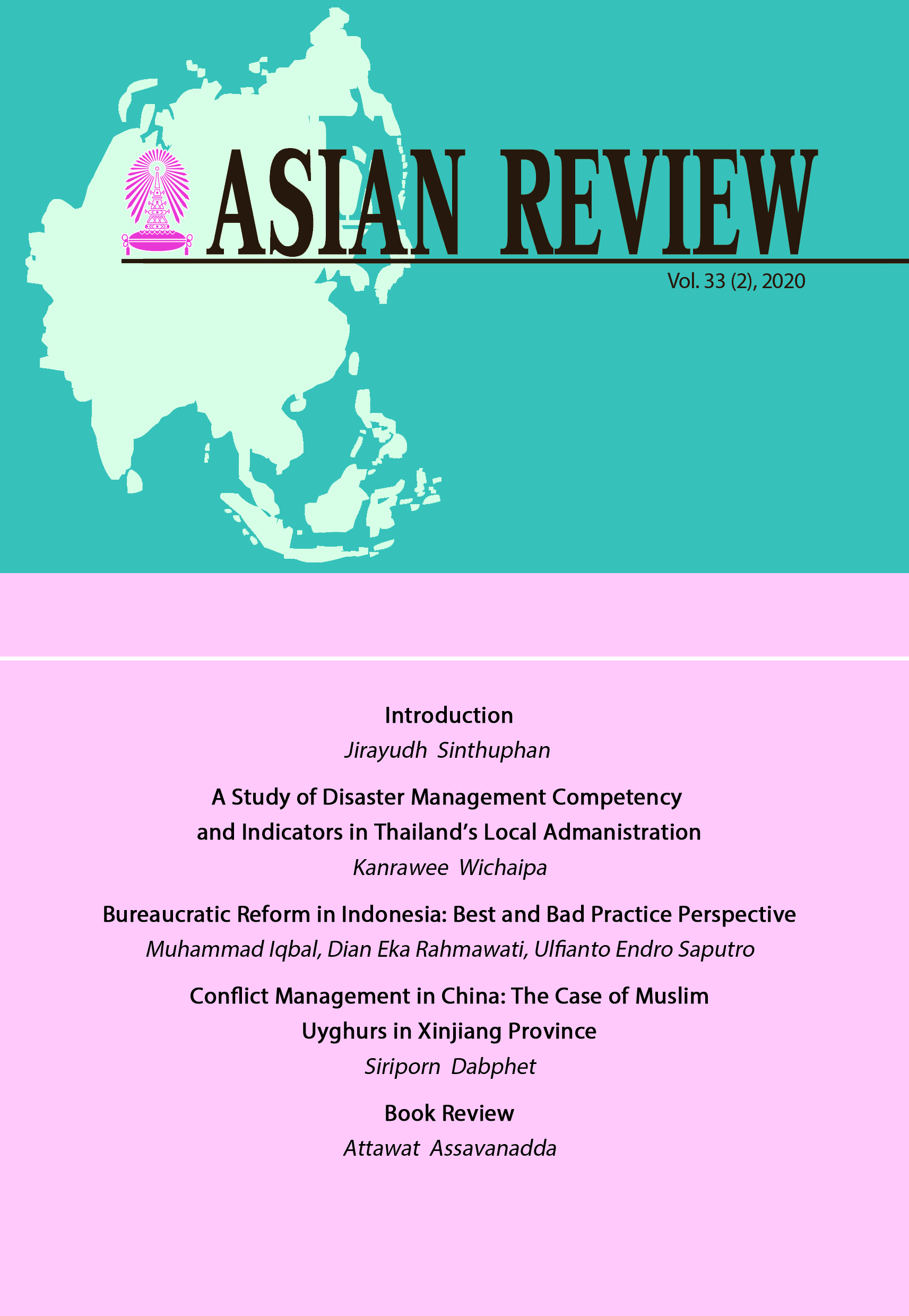A Study of Disaster Management Competency and Indicators in Thailand’s Local Admanistration
Keywords:
Competency, Functional Competency, Hazard specific competency, Human Resource DevelopmentAbstract
This qualitative research study aims to investigate functional and hazard specific competencies of Thai local administrative officers in disaster prevention and mitigation. The data was collected through document research, in-depth interviews and group discussions from representatives from a central policy making agency and with staff from disaster prevention and mitigation agencies in six local administrative organizations around Thailand. The data was collected in
six localities and analyzed by means of content analysis. The results showed that there are three functional competencies, namely 1) understanding of laws, regulations and authority; 2) proactive analysis and evaluation of the situation; and 3) networking in operations and public and community relations. Hazard specific competency in floods and mudslides includes the movement and evacuation of flood victims and persuasion of the management in the area, while hazard specific competency in storms includes specialization in the demolition of buildings and obstructions. The study found that human resource development in the local government should be developed through the concept of competency as a framework for development and performance appraisal.
Keywords: Competency, Functional Competency, Hazard specific competency, Human Resource Development
References
2. Benner, P. 1984. Form novice to expert: Excellence and power in clinical nursing practice. Menlo Park. CA: Addison-Wesley.
3. Boam, Rosemary and Paul Sparrow. 1992. Designing and Achieving Competency. McGraw Hill, Reading.
4. Boyatzis, R.E. 1982. “Competence at work.” In Motivation and society, edited by Stewart. San Francisco: Jossey-Bass.
5. Department of Disaster Prevention and Mitigation. 2007. Prevention and Mitigation Act. Bangkok: Ministry of Interior.
6. Department of Disaster Prevention and Mitigation. 2009. National Disaster Prevention and Mitigation Program, 2010 – 2014. Bangkok:
Ministry of Interior.
7. Department of Disaster Prevention and Mitigation. 2010. A Guide to the Practice of Fire Prevention and Mitigation. Bangkok: Ministry of Interior.
8. Department of Disaster Prevention and Mitigation. 2015. National Disaster Preparedness and Response Plan. Bangkok: Ministry of Interior.
9. Department of Disaster Prevention and Mitigation. 2014. Book Terminology Management Risks From Disasters. Bangkok: Ministry of Interior.
10. Kamolvej, Tavida.2009. “Disaster Management Science.” Journal of Political Science (3).
11. Kamolvej, Tavida. 2011. “Local Disaster Management Guide.” Bangkok: King Prajadhipok’s Institute.
12. McClelland, D.C. 1975. A Competency Model For Human Resource Management Specialists to Be Used In The Delivery of The Hu33
Kanrawee Wichaipa man Resource Management Cycle. Boston: Mcber.
13. McClelland, D.C., J.W. Atkinson, R.A. Clark, and E.L. Lowell. 1953. The Achievement Motive. Chicago : Barakaldo Books
14. Office of the Civil Service Commission.2004. Implementing Human Resource Management. Capabilities Documents for the Seminar
on Competency of Government Officials, January 31.
15. Schuler, R.S. “Strategic Human Resources Management: Linking People With the Strategic Needs of Business.” Organizational Dynamics
21(1) Summer.
16. Worawit, Anounsak.. 2004. “The concept of old performance that we lost.” Chulalongkorn University Journal 16(64).
Interview
1. Policy Executives of Local Government Organizations and staff
in disaster prevention and mitigation in Ang Thong Municipality, Pak
Kret Municipality, Huayang Subdistrict Administrative Organization,
Mae Sai Subdistrict Administrative Organization, Surat Thani City
Municipality Amphoe, Udon Thani City Municipality Manager and
staff involved in the public health work at the Personnel Development
Institute for Disaster Prevention and Mitigation.
Downloads
Published
How to Cite
Issue
Section
License
Published articles are under the copyright of the Instiute of Asian Studies, Chulalongkorn University. Partially or totally publication of an article elsewhere is possible only after the consent from the editors.







